Observation of two bright exploding stars improves the astronomical “tape measure” that scientists use to calculate the acceleration of the expansion of the universe
Light from two massive stars that exploded hundreds of millions of years ago recently reached Earth, and each event was identified as a supernova.
A supernova discovered Feb. 6 exploded about 450 million years ago, said Farley Ferrante, a graduate student at Southern Methodist University, Dallas, who made the initial observation.
The exploding star is in a relatively empty portion of the sky labeled “anonymous” in the faint constellation Canes Venatici. Home to a handful of galaxies, Canes Venatici is near the constellation Ursa Major, best known for the Big Dipper.




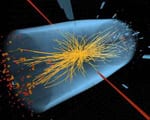
A second supernova discovered Nov. 20 exploded about 230 million years ago, said Ferrante, who made the initial observation. That exploding star is in one of the many galaxies of the Virgo constellation.
Both supernovae were spotted with the Robotic Optical Transient Search Experiment‘s robotic telescope ROTSE3b, which is now operated by SMU graduate students. ROTSE3b is at the McDonald Observatory in the Davis Mountains of West Texas near Fort Davis.
The supernova that exploded about 450 million years ago is officially designated Supernova 2013X. It occurred when life on Earth consisted of creatures in the seas and oceans and along coastlines. Following naming conventions for supernova, Supernova 2013X was nicknamed “Everest” by Govinda Dhungana, an SMU graduate student who participated in the discovery.
The supernova that exploded about 230 million years ago is officially designated Supernova 2012ha. The light from that explosion has been en route to Earth since the Triassic geologic period, when dinosaurs roamed the planet. “That’s fairly recent as these explosions go,” Ferrante said. Dhungana gave the nickname “Sherpa” to Supernova 2012ha.
Type 1a supernovae help measure cosmic distances
Everest and Sherpa are two of about 200 supernovae discovered worldwide in a given year. Before telescopes, supernovae observations were rare — sometimes only several every few centuries, according to the scientists.
“Everest and Sherpa aren’t noteworthy for being the youngest, oldest, closest, furthest or biggest supernovae ever observed,” Ferrante said. “But both, like other supernovae of their kind, are important because they provide us with information for further science.”
Everest and Sherpa are Type 1a supernovae, the result of white dwarf explosions, said Robert Kehoe, physics professor and leader of the SMU astronomy team in the SMU Department of Physics.
The scientists explain that a white dwarf is a dying star that has burned up all its energy. It is about as massive as the Earth’s sun. It’s core is about the size of the Earth. The core is dense, however, and one teaspoon of it weighs as much as Mount Everest, Kehoe said.
A white dwarf explodes if fusion restarts by tugging material from a nearby star, according to the scientists. The white dwarf grows to about one and a half times the size of the sun. Unable to support its weight, Kehoe said, collapse is rapid, fusion reignites and the white dwarf explodes. The result is a Type 1a supernova.
“We call these Type 1a supernovae standard candles,” Ferrante said. “Since Type 1a supernovae begin from this standard process, their intrinsic brightness is very similar. So they become a device by which scientists can measure cosmic distance. From Earth, we measure the light intensity of the exploded star. As star distances from Earth increase, their brilliance diminishes.”
While Sherpa is a standard Type 1a, Everest is peculiar. It exhibits the characteristics of a Type 1a called a 1991T, Ferrante said.
“Everest is the result of two white dwarfs that collide, then merge,” he said.
The brightness of Sherpa’s explosion was a magnitude 16, which is far dimmer than can be seen with the naked eye. Everest’s explosion was even dimmer, a magnitude 18.
For perspective, light travels 5.88 trillion miles in a year. The sun is 93 million miles from Earth, so light from the sun reaches Earth in eight minutes.
Supernovae help in search to understand mysterious dark energy
Like other Type 1a supernovae, Everest and Sherpa provide scientists with a tiny piece to the puzzle of one of the greatest mysteries of the universe: What is dark energy?
Every Type 1a supernova provides astronomers with indirect information about dark energy, which makes up 73 percent of the mass-energy in the universe. It’s theorized that dark energy explains the accelerating expansion of our universe at various epochs after the Big Bang.
“Every exploding star observed allows astronomers to more precisely calibrate the increasing speed at which our universe is expanding,” Ferrante said. “The older the explosion, the farther away, the closer it was to the Big Bang and the better it helps us understand dark energy.”
Hobby-Eberly spectrogram confirms discovery of supernovae
Everest’s discovery was confirmed by a spectrogram obtained Feb. 10 with the Hobby-Eberly Telescope, also at McDonald Observatory. Everest is located in a host galaxy identified as 2286144 in the Principal Galaxies Catalog.
A spectrogram obtained Nov. 29 with the Hobby-Eberly Telescope confirmed Sherpa’s discovery in one of the many galaxies of the Virgo Cluster.
The Central Bureau for Astronomical Telegrams of the International Astronomical Union officially designated the discoveries as Supernova 2013X and Supernova 2012ha.
Ferrante and Dhungana made both discoveries as part of an international collaboration of physicists from nine universities. Everest and Sherpa were discovered with a fully automated, remotely controlled robotic telescope at the University of Texas’ McDonald Observatory. The discovery is a first for the SMU collaboration members.
The telescope, ROTSE, constantly scans the skies for any significant changes, such as supernovae, novae and variable stars. Data from the telescope are reviewed daily by Ferrante, Dhungana and other scientists on the team, who search for signs of stellar activity.
Until now, primary responsibility for the management and operation of ROTSE3b was held by the University of Michigan. The SMU team took over that responsibility starting in Fall 2012. The ownership transfer will be completed by summer 2013, said SMU’s Kehoe.
Follow SMUResearch.com on Twitter.
For more information, www.smuresearch.com.
SMU is a nationally ranked private university in Dallas founded 100 years ago. Today, SMU enrolls nearly 11,000 students who benefit from the academic opportunities and international reach of seven degree-granting schools. For more information see www.smu.edu.
SMU has an uplink facility located on campus for live TV, radio, or online interviews. To speak with an SMU expert or book an SMU guest in the studio, call SMU News & Communications at 214-768-7650.

 Hiding in plain sight: How invisibility saved New Mexico’s Jicarilla Apache
Hiding in plain sight: How invisibility saved New Mexico’s Jicarilla Apache Academic achievement improved among students active in structured after-school programs
Academic achievement improved among students active in structured after-school programs Ancient tree-ring records from southwest U.S. suggest today’s megafires are truly unusual
Ancient tree-ring records from southwest U.S. suggest today’s megafires are truly unusual Human diabetes has new research tool: Overfed fruit flies that develop insulin resistance
Human diabetes has new research tool: Overfed fruit flies that develop insulin resistance Middle school boys who are reluctant readers value reading more after using e-readers
Middle school boys who are reluctant readers value reading more after using e-readers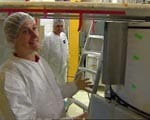


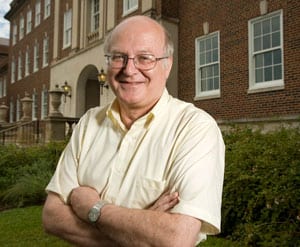
 SMU physicists at CERN find hints of long sought after Higgs boson — dubbed the fundamental “God” particle
SMU physicists at CERN find hints of long sought after Higgs boson — dubbed the fundamental “God” particle Dallas Observer: As Physicists Near Discovery of God Particle, A Word With SMU Prof Involved In the Search
Dallas Observer: As Physicists Near Discovery of God Particle, A Word With SMU Prof Involved In the Search WFAA: Super Collider’s legacy lives on in Switzerland
WFAA: Super Collider’s legacy lives on in Switzerland

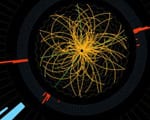 CBS Channel 11: Long-fought discovery of elusive “God” particle brings joy to SMU physicists
CBS Channel 11: Long-fought discovery of elusive “God” particle brings joy to SMU physicists “Going Up Alleys” podcast: The Cosmos and the Collider
“Going Up Alleys” podcast: The Cosmos and the Collider Quantum Diaries: Cleaning the world’s biggest machine
Quantum Diaries: Cleaning the world’s biggest machine DOE Award: advancing SMU’s link to the God particle
DOE Award: advancing SMU’s link to the God particle
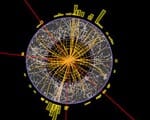 Dallas Observer: Has the God Particle Been Found?
Dallas Observer: Has the God Particle Been Found?